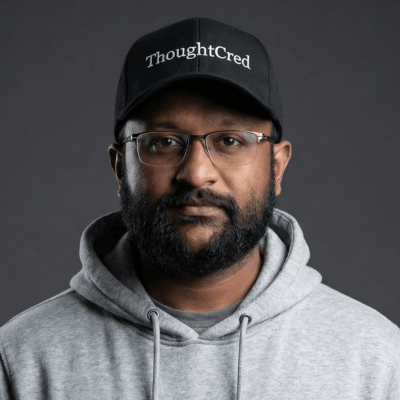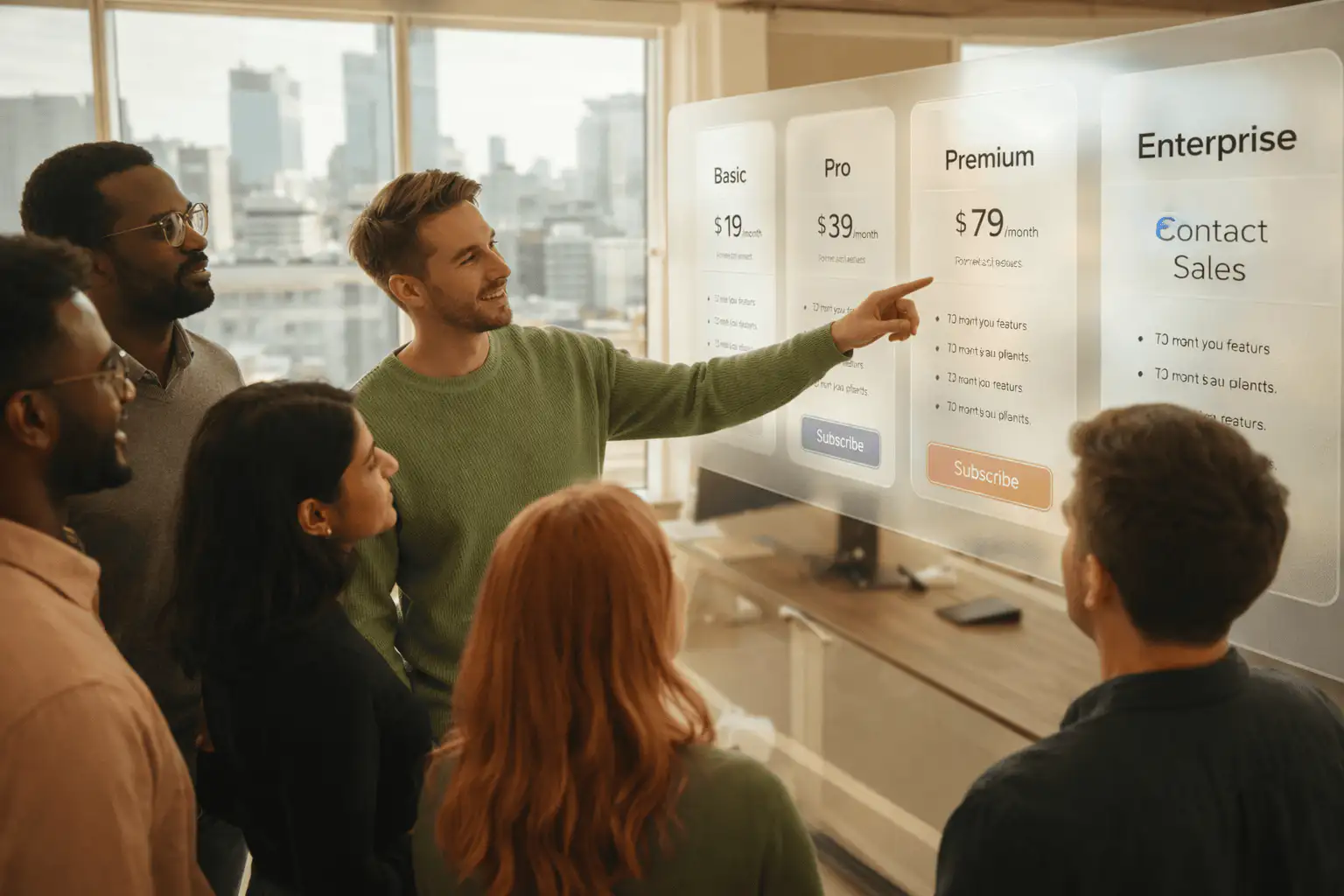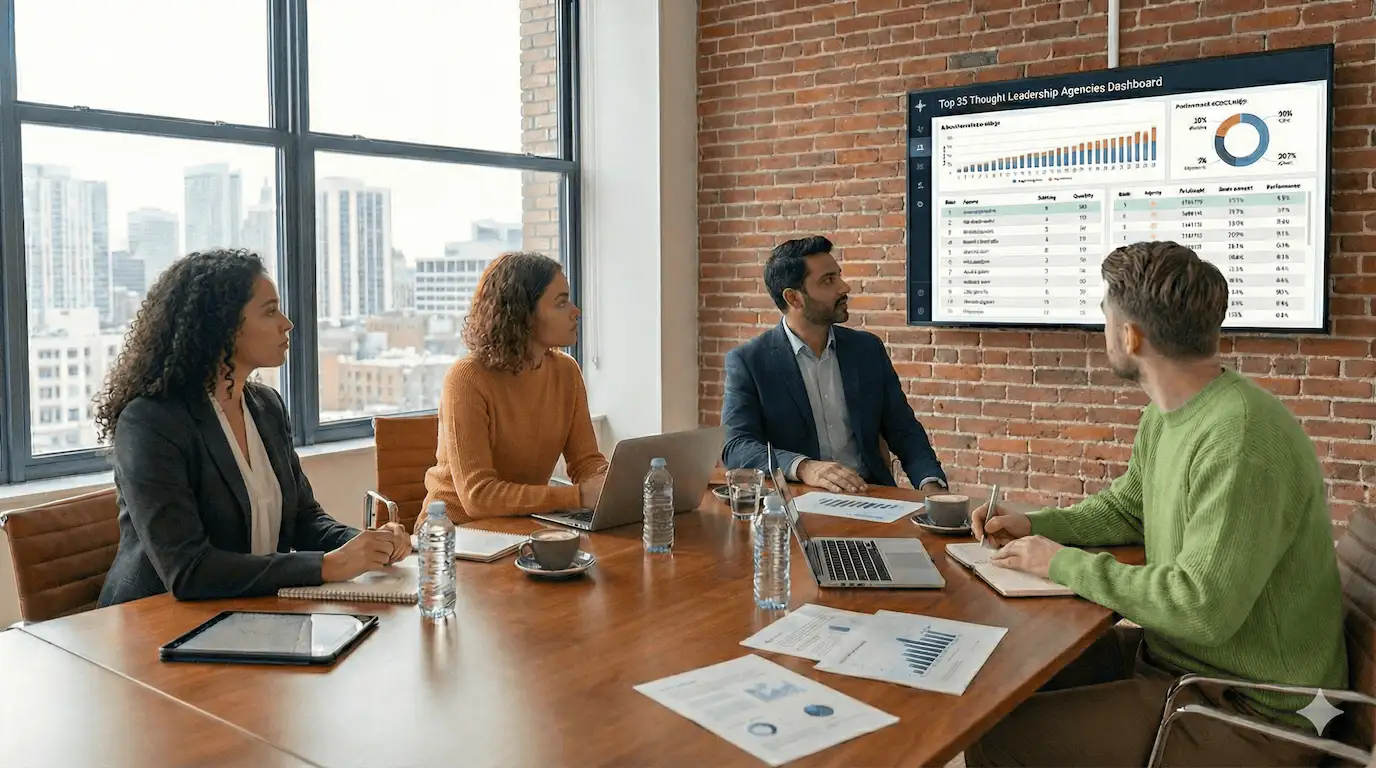Your LinkedIn company page is broken. Not the platform. Your strategy.
We've been working with AI founders, CMOs, content heads, and social media leaders across Series A, B, and enterprise companies for the past few years. And we keep seeing the same pattern play out.
Let me paint a picture: You've got 50,000 followers on your enterprise AI company's LinkedIn page. You're posting regularly—product updates, thought leadership, company news. Your team is excited. Your CMO is optimistic. But when you check the analytics, reality hits: your latest post got 47 likes (mostly from employees), and maybe 2,000 people actually saw it.
Meanwhile, your competitor's founder just posted a 2-minute rant about why most AI implementations fail. No sales pitch. No polish. Just raw, unfiltered expertise. It's got 15,000 views, 800 comments, and the conversation is on fire.
You're both on the same platform. So why is their founder's personal post crushing your company page?
Because LinkedIn has fundamentally shifted the rules of the game—and most enterprise AI companies haven't caught on.
The Brutal Truth About Company Pages in 2025
Only 1.6% of your LinkedIn followers will see your company page post.
Let that sink in. You're posting to 50,000 people, but roughly 800 actually see it. It's not a bug. It's the algorithm working exactly as designed.
Here's what changed: LinkedIn's 2025 algorithm heavily rewards people over logos. Brand posts make up just 1-2% of the entire LinkedIn feed. The platform has made a conscious choice: personal content gets distribution. Company content gets buried.
This isn't hypothetical. The data backs it up:
- 1.6% organic reach for company posts (2025)
- External engagement is 35% more valuable to the algorithm than internal engagement (likes from colleagues don't move the needle)
- Story-based, founder-authored posts get 10x more reach than feature announcements
- Company pages are explore, not discover. When execs see your pitch, they research your founder's posts and employee activity—not your company page
But here's what makes this even more painful: you need the company page. A 50K follower company page signals authority and scale. Investors notice. Prospects notice. It's a credibility marker. But you can't rely on it for actual reach or engagement.
This creates a paradox that most enterprise AI companies are getting completely wrong.
Who's Actually on LinkedIn (And What They Want)
Before we go further, let's be real about who's scrolling LinkedIn: 90 million senior-level executives, 63 million decision-makers, 17 million thought leaders, and yes—sales reps, marketers, job seekers, and people just killing time between meetings.
Around 60% of LinkedIn users are actively searching for business insights, not job postings or networking fluff. Millennials dominate (25-34 age group), but Gen X and Gen Z are sizable populations too.
Here's the key: these people are looking for expertise, not feature lists. They want insights that make them think differently about their industry. They want to learn from people they trust. They want proof that you understand their world.
Your company page can't do this. A founder who shares a lesson learned from a customer conversation? That person can.
The Explore vs. Discover Gap: Why Execs Research Your Founder, Not Your Page
Here's what happens when an executive gets pitched by your sales team or sees your ad:
They don't go to your LinkedIn company page. They research your founder. They check your employees' posts. They want to know: Is this founder legit? Do they actually understand my problem? Are their employees posting about this, or would they rather work anywhere else?
This is the Explore vs. Discover problem.
Your company page is "explore"—passive, trust-neutral, controlled. When someone lands on it, they're verifying things you already told them. Founder and employee posts are "discover"—they feel organic, earned, authentic. The algorithm massively rewards this difference.
For enterprise AI companies, this matters even more because your buyer is making a relationship-based decision, not just a technical one. Before they commit to your platform, they're evaluating you as a thought partner, a credible authority, someone who gets their world.
A slick company page doesn't communicate that. But a founder sharing how they solved a customer's hardest problem? That tells them everything.
ThoughtSpot, DataRobot, and UiPath don't dominate LinkedIn because they post every day on their company page. They dominate because their C-suite regularly shares founder takes, customer stories, and lessons learned—and then their employees amplify it. That's the formula.
Company Pages Generate Authority, Not Engagement—And Why That's a Problem
Here's the uncomfortable truth: company pages are good for exactly one thing—signaling scale and legitimacy.
A 50,000 follower company page makes you look more credible than a 2,000 follower one. Investors check it. Prospects evaluate it. It's a credibility signal. Full stop.
But beyond that? The engagement data is brutal:
- Only 1.6% of followers see your posts
- Brand posts make up 1-2% of the entire LinkedIn feed
- External engagement (from non-employees) is 35% more valuable than internal
- Story-based, human content beats feature content 10-to-1
Most enterprise AI companies make a critical mistake: they try to make the company page do all the work. They post product updates, case studies, thought leadership—trying to turn the company page into a distribution channel. It doesn't work.
Meanwhile, their competitors' founders are posting raw, unfiltered takes about market trends, customer struggles, and lessons learned. These posts go viral. Why? Because they're not selling. They're teaching. They're sharing perspective. They're human.
Here's the paradox that kills most strategies: You need the company page for credibility, but you can't rely on it for reach. So what do you do?
You use it as a credibility signal, not your primary distribution channel. Your founder and employees become your real LinkedIn strategy.
Why Emotions Beat Features Every Single Time
Nobody gets excited about your AI model's architecture. Nobody wakes up thinking, "I hope my vendor posts about their new API today."
What people do care about: Will this solve my problem? Can I trust these people? Are they actually experts or just good at marketing?
Personal posts from founders answer these questions. Company posts can't.
Here's the emotional angle: when your founder shares a customer story about how your AI helped someone make better decisions—and includes the human impact, the struggle they faced, the outcome they achieved—that's memorable. That's shareable. That creates belief.
When your company page posts a case study link, people scroll past.
Example from the wild: J&J's LinkedIn Live "Road to Vaccine" video series got 983,000 watched minutes per episode. Not because it was a company announcement, but because it was told by leaders and employees. The channel was the company page, but the credibility came from people. The emotion came from the storytelling.
DataRobot doesn't crush LinkedIn by posting "We launched a new feature." They crush it by posting "Here's how our customer cut their time-to-insight by 60%—and what they learned in the process." The customer is in the spotlight. The outcome is real. The emotion is there.
This week's action: Ask one customer for their story. Not a polished case study—a real story. What was the problem? How did you help? What changed? Have your founder post it with context. Compare the engagement to your last product announcement. The difference will shock you.
Distribution Over Everything: Why Your Content Strategy Is Actually Failing
Here's what separates LinkedIn winners from losers: distribution strategy, not content quality.
As Joseph, founder of ThoughtCred, tells the marketing heads and content leaders we work with: "Ninety percent of enterprise AI companies are treating LinkedIn like a broadcast channel. They create great content and throw it at a company page expecting it to land. The 1.6% reach isn't a platform problem—it's a strategy problem. The companies crushing it aren't posting more. They're posting smarter, through the right people, with the right distribution multiplier."
The math is straightforward:
- Consistent, active posting = 5x more page views, 11x more followers, 7x more impressions
- BUT it only works if combined with employee advocacy and authentic storytelling
- External engagement is 35% more valuable than internal
- User-generated content (customer stories, employee spotlights) outperforms company broadcasts 3-to-1
Most enterprise AI companies do this completely backward.
Here's what losing companies do:
- Post on company page
- Email employees asking them to like it
- Wonder why nothing moves the needle
Here's what winning companies do:
- Founder posts authentic take/story on personal profile
- Employees see it, engage genuinely, share it
- Momentum builds organically
- Company page reinforces if the content performs
That's distribution. That's how you actually move the needle on LinkedIn.
The key insight: you can't just post on the company page and hope. You need a three-pronged strategy:
1. Founder/Leadership Posts First - Story-based content from personal profiles. Raw insights. Lessons learned. This is where external discovery happens.
2. Employee Amplification - Your team shares, comments, engages authentically. This signals to the algorithm that the content matters and extends reach exponentially.
3. Company Page Reinforcement - Once the content has traction, the company page can share it or cross-post. Now it's amplifying momentum, not creating it.
Quick win for this week:
- Identify your top 5 employee advocates
- Have each commit to posting 2x per week (stories, insights, lessons learned)
- Create a simple 2-sentence template they can use to get started
- Track external engagement in 30 days (it should climb 200%+)
LinkedIn's 2025 Algorithm: The Unspoken Rules Winning Companies Follow
LinkedIn's algorithm isn't mysterious. It's just transparent to people paying attention.
Here are the rules:
Subject-matter experts get distribution. Posts from people with credible positions in your industry get wider reach. This is why founder posts crush company posts. The algorithm sees subject-matter expertise and rewards it.
Early engagement is everything. Posts that get comments (not just likes) in the first 2 hours signal quality and get amplified significantly. This is why you need employee advocacy—it creates that early signal.
Text and native video beat links. The algorithm now deprioritizes posts that link out. This is massive for AI companies used to linking back to their website. A carousel post about AI insights beats a link to your blog 10-to-1.
Dwell time matters. Posts that keep people reading longer win the algorithm. Stories, contrarian takes, and educational content perform better than announcements because people spend more time with them.
Why this matters for enterprise AI: If you're posting product announcements with links to your website, you're fighting the algorithm. If your founder is posting a 3-paragraph take on why most AI implementations fail (with examples and lessons), the algorithm is actively pushing it.
The mindset shift is critical: Stop thinking "What do we want to tell people about our company?" Start thinking "What insights would make someone stop scrolling and think differently about this space?"
The Real LinkedIn Game for Enterprise AI
Let's cut through the noise: the companies winning on LinkedIn aren't the ones with the most followers or the slickest company pages. They're the ones who figured out that LinkedIn rewards authenticity, expertise, and human connection—not corporate polish.
We've watched this play out across dozens of founders and their teams. The ones who shift their thinking from "company page strategy" to "founder and employee strategy" see immediate results. The ones who don't? They're still wondering why their LinkedIn investment isn't moving the needle.
Your competitor isn't beating you because they have a better product. They're beating you because their founder is sharing insights that matter, their employees are actively engaged, and their company page is a credibility signal—not a distribution strategy.
Here's the uncomfortable truth: your company page is just a credibility marker. Your founder and employees are your real LinkedIn strategy.
The 1.6% organic reach isn't a bug—it's a feature. It's forcing companies to be smarter about who tells their story and how they tell it. Generic company announcements get buried. Founder insights spread like wildfire. Personal stories beat pitch decks. Employee advocacy is worth more than ad spend.
If you're still treating LinkedIn like a broadcast channel (push content to your followers), you're already losing. If you're treating it like a network (share insights, amplify employee voices, tell human stories), you're building something real.
Your 90-Day Action Plan
Ready to stop wasting time on a company page that nobody sees? Here's what actually works:
Week 1-2: Foundation
- Have your founder commit to posting 1x per week (authentic takes, lessons, contrarian POV—no product stuff)
- Identify 5 employee advocates
- Each employee commits to 2 posts per week (stories, insights, questions, lessons)
- Create a simple template so people don't overthink it
Week 3-4: Content Mining
- Conduct 1-2 customer interviews and extract real stories
- Document lessons learned from recent deals (wins and losses)
- Have each employee write down 2-3 insights from their work
- Pick your best story and have your founder post it
Month 2: Amplification
- Track which posts are getting external engagement (comments, not just likes)
- Double down on what works (if customer stories win, do more customer stories)
- Have employees share, comment, and engage authentically on each other's posts
- Move the company page to a secondary role (reinforcing winners, not creating them)
Month 3: Optimization
- Review engagement data—external engagement should be up 200%+
- Identify your top-performing content types
- Scale what works
- Track inbound opportunities correlated to specific posts
Your success metrics (not vanity metrics):
- External engagement up 200%+
- Follower growth from non-employees (actual market traction)
- Inbound inquiries mentioning specific founder insights
- Employee engagement on posts (consistency over time)
The Bottom Line
Your LinkedIn company page isn't broken. Your strategy is.
The 1.6% organic reach isn't a problem to solve—it's a signal to rethink. It's telling you that company pages don't drive discovery. People do. Authenticity does. Expertise does.
The companies dominating LinkedIn in 2025 aren't posting more on their company pages. They're posting smarter on their personal profiles, amplifying employee voices, and treating the company page as a credibility signal—not a distribution channel.
Your LinkedIn dominance won't come from follower count. It'll come from being the founder people want to learn from and the company people want to work for and buy from.
That's the real LinkedIn game. And most enterprise AI companies still aren't playing it.
The question is: are you going to keep posting to an audience that doesn't see you, or are you ready to shift strategy?




.webp)



.svg)